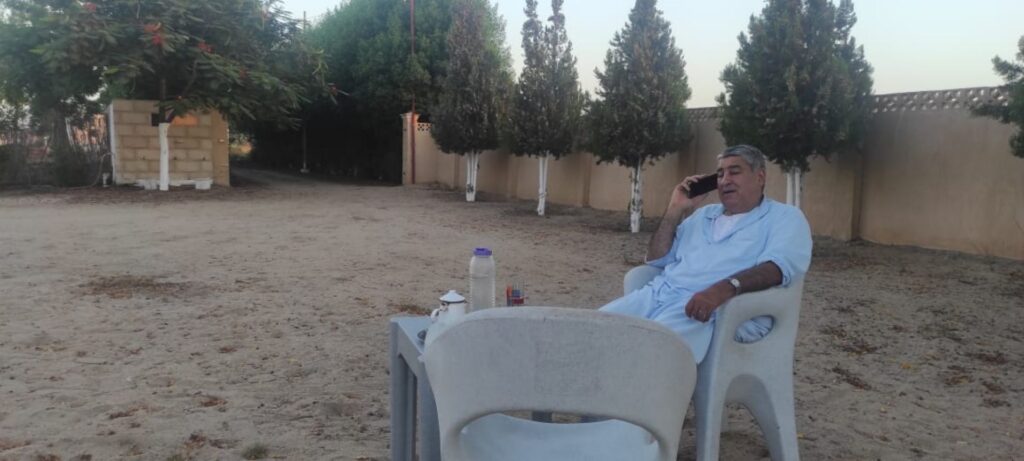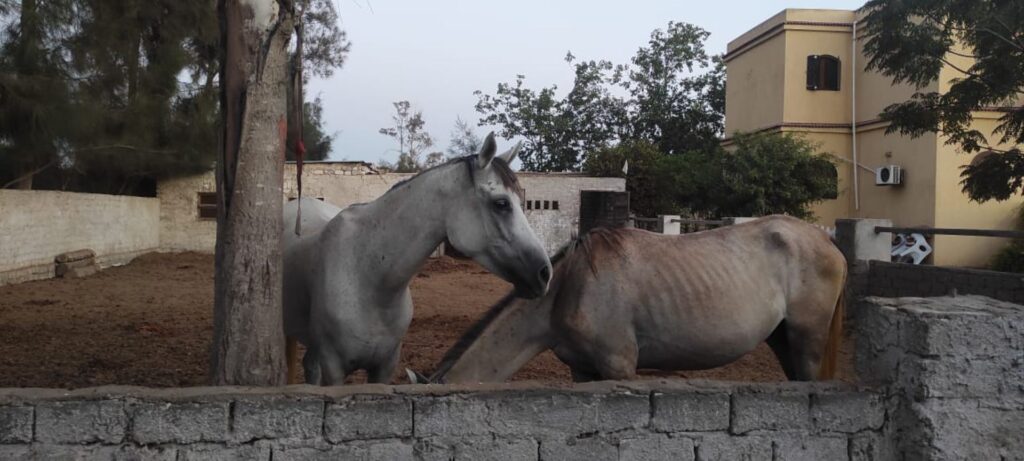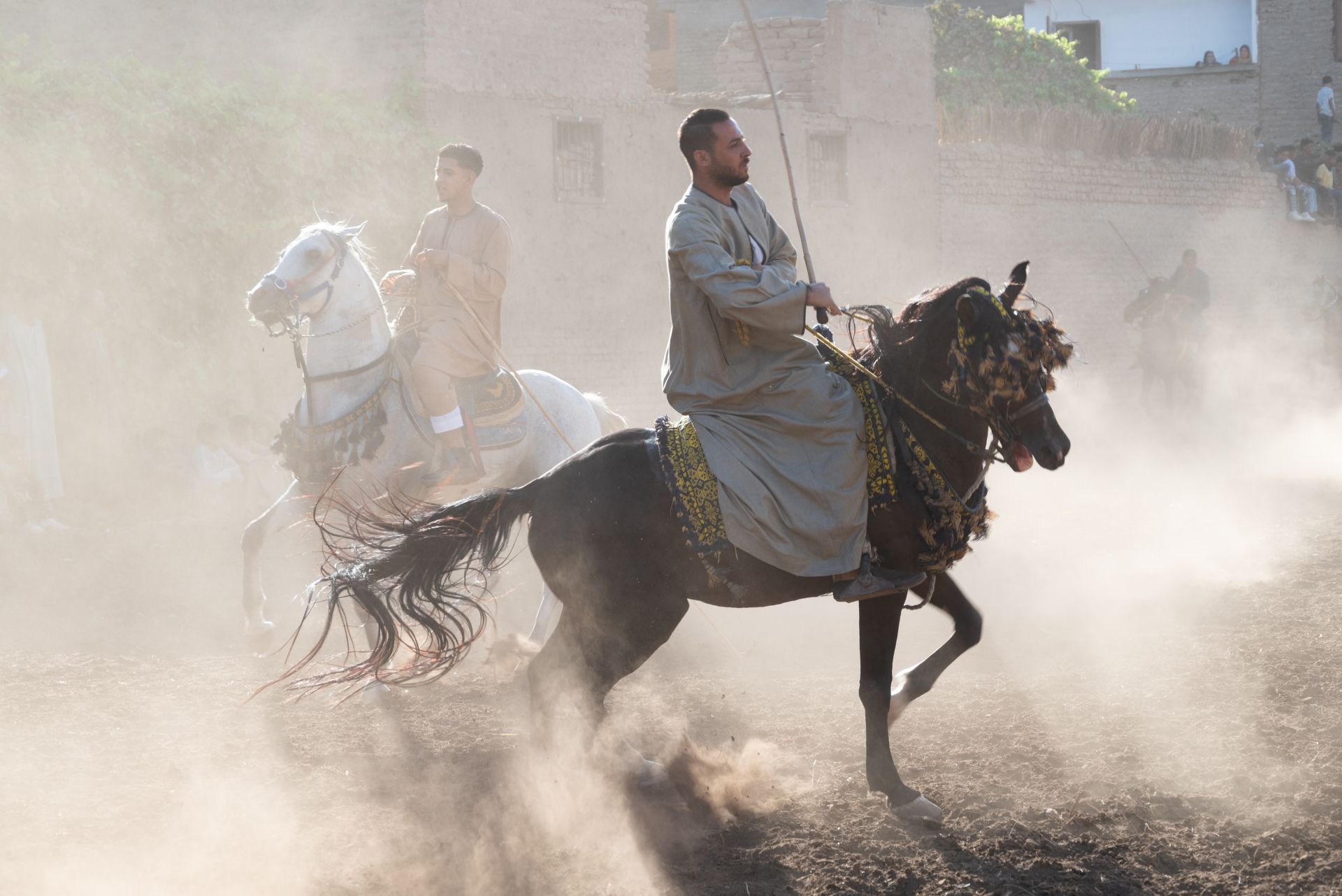One September afternoon last year in Bilbeis, Egypt, I stood at the edge of a dusty arena as the Sharqia Arabian Horse Festival opened. Running since 1991, it features riding displays and a competitive horse show, but what matters is the setting: This is Egypt’s only equine festival tied to a single province. Even Sharqia’s flag bears a rearing white stallion on a green background — shorthand for the province’s long marriage of horses and agriculture.
The scene posed a stubborn question: Why are Arabian horses bound to Sharqia above all other provinces? Trainers, organizers and spectators agreed that the connection traces back to the waves of Arab tribes that migrated from the Arabian Peninsula to Egypt from the seventh century onward. But what, precisely, was the bond between these tribes and their horses?
In the words of the poet al-Mutanabbi, “The horse is like a true friend — rare indeed / though to the untested eye they may seem many.” The relationship between Arabs and their horses was forged in the isolation of the desert and in the face of its risks. Shaped by that harsh landscape, they formed an alliance for survival. The tie went far beyond utility. Sometimes foals slept inside tents; horses were family.
To safeguard prized qualities, tribes first kept pedigrees orally, like their own genealogies, then fixed them in “hujaj” (certificates) verified by witnesses and bearing the tribal sheikh’s seal. The key element was a maternal lineage traced for seven or more generations — unlike today’s international systems that emphasize the sire line. The tribal system was practical: Mares remained with herds while only the finest stallion was usually kept and others were traded, strengthening matrilines. Bedouins called each lineage “al-rasen” (the rope), an unbroken cord to the mother, and spoke of five classic strains: Kuhaylan, Saqlawi, Abayyan, Hadban and Dahman.
These records did more than catalog traits; they elevated the horses’ social and political standing — as gifts exchanged between tribes and as weapons of war. Such horses carried Arabs beyond the Arabian Peninsula during the early Islamic campaigns.
The Arab tribal migrations to Egypt were varied in both time and geography. They began with the Arab-Muslim conquest of Egypt in 642 CE and continued for centuries, through the Mamluk era, to lands from the Nile Delta to Upper Egypt. Settlement patterns varied as well. Some tribes integrated into urban life, while others maintained purely nomadic desert ways, and still others chose what we might call “the middle path” — settling on the margins between desert and farmland. Resources were accessible to these tribes, but the familiar desert sands remained beneath their feet, making the environment feel more like home.
This last pattern is what interests me, as Sharqia province perfectly blends rural and desert landscapes, making it an ideal homeland for tribes of this type. Among the most prominent is the Tahawiyya tribe.
I remembered a university classmate from the tribe but couldn’t find him at first. Online, I found the family’s historical website — a trove curated by Hajj Saud al-Tahawi, the family historian. I wrote to him and was soon driving to al-Husayniyya, on the northern edge of Sharqia, where horse statues line the road like sentinels. At his villa, a white flag flew above the house — a tribal marker, I learned later.
Sitting in the sandy courtyard with tea in hand, al-Tahawi traced the tribe’s path. The Tahawiyya descend from al-Hanadi, a noted branch of the Banu Sulaym tribe in the Arabian Peninsula. Their migration to Egypt looped through Morocco after the first exodus and back during the Mamluk era. They later settled in the western delta, especially at Beheira, where a conflict flared with the Awlad Ali tribe. In 1812, Muhammad Ali Pasha, the Ottoman Empire’s governor of Egypt, moved the Tahawiyya to Sharqia, granting them 3,000 feddans (about 3,100 acres) to secure their loyalty, pacify the frontier and end intertribal warfare.

Arab tribes posed one of Ali’s most difficult problems, including tense relations with “fellahin” (peasant farmers), with Mamluks and among the tribes themselves. His answer was land grants — an incentive to settle and a barrier against raids.
As al-Tahawi made plain, there was a clash between the worldviews of the fellahin and the Bedouin. Farming fixes you to one spot, while Bedouin imagined the earth as open. Horses, not fields, meant mobility, honor and personal freedom. By contrast, fellahin rooted their identities in land and villages. Both horses and land were tangible assets, yet they carried different anthropological weight — two ways of belonging, two visions of freedom within one province.
Inevitably, the Tahawiyya hired fellahin to work their estates, and a blending began — not only in labor but in daily life, with farmworkers’ houses scattered among new Arab landowners’ homes. The Arabs would break the silence of the night with their unique traditional dances, unlike the “mawlids” (saints’ festivals) or other village celebrations.

Renowned as formidable riders, the Tahawiyya produced powerful mounts. Ali relied on them for cavalry stock, and Ibrahim Pasha, Ali’s son and heir, used them for his personal guard in Syria, though the state also drew horses from campaigns in the Hijaz as spoils and gifts. Beyond war, Tahawiyya horsemanship was a key part of the hunting triad of horses, falcons and saluki dogs, though horses remained the most important of these for status.
By the late 19th and early 20th centuries, Orientalists visited the tribe’s stronghold, Jazirat Saud, to see and acquire horses. Foremost among them was Lady Anne Blunt, who established studs at Sheykh Obeyd in Egypt and Crabbet in England. She was among the earliest to focus on Arabian horses and created a launchpad for the global industry. The Tahawiyya thus supplied both Ali’s armies and Western seekers of “authentic” Arabian blood.
Today, however, the Tahawiyya struggle for international recognition, raising a deeper question: Who has the right to define horses? And who now arbitrates authenticity?

When Khedive Abbas Hilmi I (1849-1854) took power, he sought to make definitive records of Arabian bloodlines and fix them with the authority of the state. In 1852, he dispatched an expedition to the Arabian Peninsula with two aims: to compile “Usul al-Khayl” (“The Origins of Horses”) — a manuscript gathering oral tribal knowledge on pedigrees and traits — and to select elite horses for Egypt. The manuscript consolidated records of four maternal strains (Kuhaylan, Saqlawi, Hadban, Dahman); Abayyan was added later, under Khedive Mohammed Tawfiq. The imported horses founded Dar al-Bayda and other royal stables in Cairo, forming the base of what became the Egyptian line.
After Hilmi’s assassination, neglect followed. His son Ilhami Pasha auctioned off most of the horses in 1860. Enter Ali Pasha Sherif, the era’s great consolidator: He bought widely and rebuilt the herd to some 400 head. But upon his death, his horses were auctioned again in March of 1897.
Here, Blunt — who had already acquired the stallions Muanneq and Masud from Ali — stepped in, purchasing dozens more of Ali’s mares and stallions. After establishing Sheykh Obeyd and Crabbet, she documented the bloodlines with unusual rigor and turned both studs into key conduits between East and West.
After Blunt’s death, her daughter, Judith Blunt-Lytton, sold a share of Crabbet stock back to the Egyptian state, forming the nucleus of the Royal Kafr Farouk stables — later the Al Zahraa Station for Purebred Arabian Horses in Cairo.
From Abbas to Blunt, the breeding of Arabian horses in Egypt thus changed from being a tribal craft to having a centralized system — one that defines a cornerstone of modern Egyptian identity.
From Dar al-Bayda, Arabian horses spread across Europe and America in the early 20th century. Western stables began keeping registries that cited Hilmi’s “Usul al-Khayl” to certify authenticity and Arabian Peninsula lineage. As demand for what became the “Egyptian line” surged, European and American breeders pressed for a central authority.
In 1967, major owners and association representatives met in London and formed a preparatory committee to draft a constitution. In September 1970, at Wiesbaden, Germany, the charter was approved and the body was named the World Arabian Horse Organization (WAHO), later registered in England. An initial slate of stud books — from Egypt, Britain, the United States, France, West Germany and Spain — was recognized. In practice, that early recognition covered only horses exported from Egypt to Europe or America, or those still at Cairo’s Al Zahraa Station; lines outside that circuit, including Tahawiyya horses and many still in the Arabian Peninsula, fell beyond the new definition of “Arabian.”
Notably, Egypt, the source of the “Egyptian” bloodline, did not join WAHO initially and became a full member only in 1980, after aligning the Al Zahraa stud book of the Egyptian Agricultural Organization (EAO) with the global organization’s standards. Its delegation was led by Sayed Marei, then the speaker of the People’s Assembly and a leading breeder. Through the 1980s, Arab countries, especially in the Gulf, joined in large numbers, cementing WAHO’s role as a centralized, transnational gatekeeper of authenticity.
As Hans-Joachim Nagel, WAHO’s long-serving president, said, “This organization was founded to standardize Arabian horse criteria globally, to preserve their commercial value when transferred from country to country.”
WAHO defines an Arabian horse as “one whose name appears in a stud book or registry recognized by WAHO.” By that circular rule, it made itself the ultimate arbiter, abstracting horses from the contexts that shaped them — even from traditions rooted at Dar al-Bayda a century earlier. In this way, tribal experiential knowledge is translated into superficial, countable, enforceable paperwork — stud-book entries, score sheets, export permits — so that “authenticity” becomes a status granted by compliance with centralized standards.
Arabs did not see their horses as “living sculptures” to be judged in seconds as they are in modern contests, notes Christoph Lange, a social anthropologist who has researched the breeding and certification of Egyptian Arabian horses. Their approach was relational and situated: Maternal lineages were kept in communal memory, learned treatises classified strains, and poems and anthologies devoted to horses saw owners and poets describe particular mounts and their temperaments.
Horses were not merely symbols of nobility, courage or beauty; they were woven into everyday life in the peninsula — evidence that breeding there had material and deeply emotional dimensions, much of which the registry logic has pared away.
These changes have, in turn, contributed to the production of horses different in form and concept from those that existed before WAHO. While WAHO pushed forward knowledge and breeding techniques, it also deprived us of an alternative path for the development of the Arabian horse, rooted in its original contexts.
German visitors watching the live Tahawiyya horses in Sharqia told al-Tahawi: “These look like our old horses.” They meant the sturdier Arabians they had seen in old family photographs in Germany, with less extreme heads, more bone and depth — before the modern aesthetic took hold. I was reminded of this in the office of Emad Mokhtar Riad, the manager and director of the state-owned Arabian horse stud run by the EAO, where similar old photographs of desert-bred ancestors hung on the walls — a reminder that the founders carried different bodies. Today’s champions are finer, smaller, more sculpted; they have what al-Tahawi calls a “rabbit-like” look.
Lange describes the resulting horses as Arabian horses according to American notions — creating a distinction between “purebred” and “original”: Both are blood-authentic, yet the visible change in form has altered function. Lange’s fieldwork involved many modern horses that were seldom ridden; most were bred for the show ring — horses without riders, and not necessarily strong or fast.
Western practices recast horses as symbols of wealth, linking ownership to status and means. Although breeding is often unprofitable, it functions as a gate into elite circles and greases deals — a logic befitting a capitalist order that centers on money.
By contrast, in the traditional Arab frame, horses signified tribal honor, respect and strength. They were valuable enough to be gifts between tribes and beyond the Arabian Peninsula. In that spirit, an Arabian Horse Manifesto now urges recentering history, culture and lived practice — paired with modern science — as an alternative frame. The Arabian Horse Manifesto is an initiative that brings together researchers and horse owners committed to reviving the Arabian horse within its social and historical context.
The gap between these symbolic frameworks — one built on honor, the other on wealth — is vast. It is not simply a matter of “modernizing” the first into the second; in each, the horse anchors a wholly different value system.
With each crescent moon during the Islamic calendar month of Shaban, people gather in the heart of Qena, a city in Upper Egypt, beside the shrine of the Sufi saint Sidi Abd al-Rahim al-Qinawi, to enjoy “al-Marmah” — an ancient tradition of horse racing and stick fighting on horseback. Using horses unmarked by modern registry systems, the gatherings sometimes coincide with local mawlids across Upper Egypt. Arab tribes like the al-Hawara and al-Ashraf participate in this folk festival.
Historians agree that al-Marmah represents living remnants of the Arab riding culture that migrated to the Nile Valley over a thousand years ago, gradually transforming from military training into a carnival of love and equestrian pride. The tradition is a reminder of a very different narrative about the Arabian horse from that to be found in the official paperwork, one that is perhaps still waiting to be properly told.
“Spotlight” is a newsletter about underreported cultural trends and news from around the world, emailed to subscribers twice a week. Sign up here.



